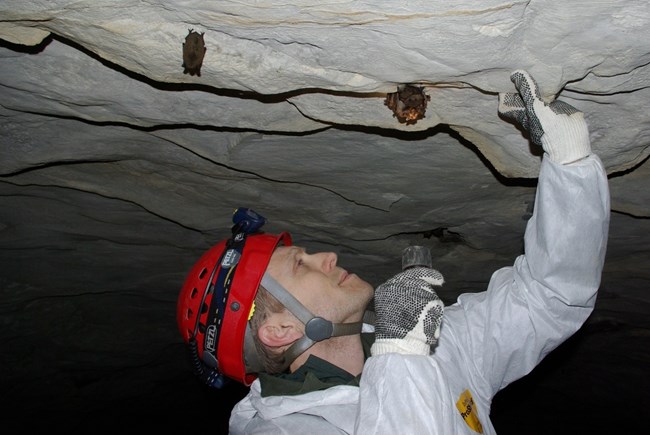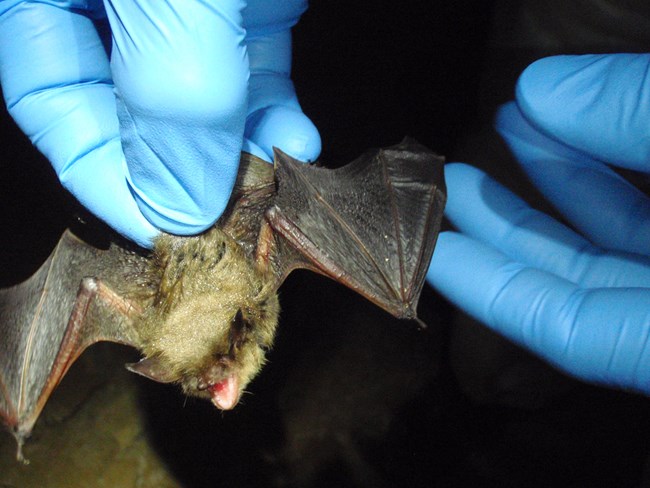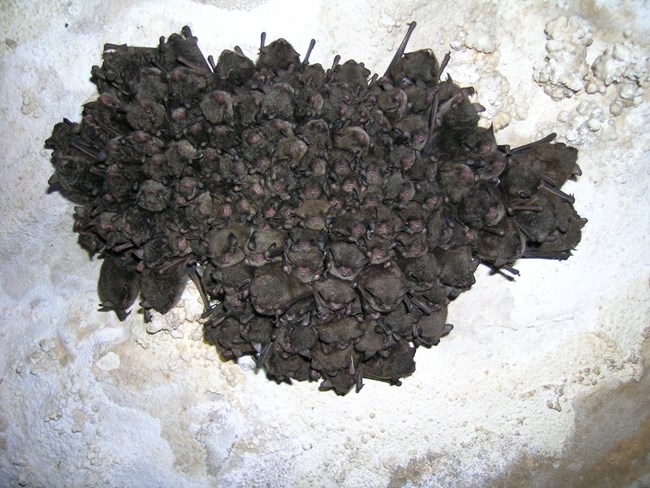
NPS Photo Mammoth Cave National Park has between 400 to 500 caves and is home to 13 species of bats, some of which are listed as threatened or endangered. Bat monitoring is done year round to track the health and diversity of the park’s bat species. How does the park study bats?Through the use of multiple techniques to monitor bats, the park has a better overall picture of the health of its bat population. During the summer months researchers and park interns conduct exit counts outside cave entrances to get estimates of the bat populations using the caves. With the use of night vision technologies such as infrared lighting, night vision goggles, infrared and thermal imaging video cameras, researchers can count bats as they leave the caves or structures at dusk to feed on insects. The staff use the various technologies repeated over several nights to ensure accuracy of the counts. 
NPS Photo Researchers also utilize mist netting for some surveys. Small opening mesh nets are placed along known flight corridors and drinking areas to physically capture bats. This allows researchers to check for species diversity, gender percentages and overall health of the bat population. The ability to have bats in hand also allows the researchers to collect hair or tissue samples for genetic or disease testing. These bats may also have small transmitters affixed to them in order to track them to their roosting areas. Several new maternity sites have been discovered this way. 
NPS Photo What have the surveys taught us?Since the arrival of White-nose Syndrome (WNS) in the park around 2012, researchers have seen a large decline in numbers of some of the most visible species of bats, such as the federally threatened northern long-eared bat. This is an indication that their numbers have decreased to the point that they are no longer viable on the landscape. What does that mean? It means that their numbers have gotten so low the benefits they once provided are essentially no longer there. However, as some bat species numbers have dipped to all time lows, other species that were once rarely noticed, such as tree-roosting bats like evening bats, have seen their numbers rise, possibly filling the niche left behind. |
Last updated: March 31, 2023
